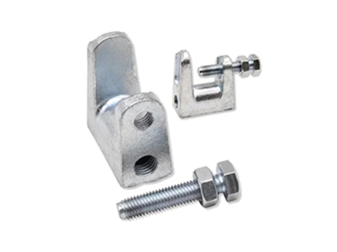Jul . 26, 2024 15:56 Back to list
A Comprehensive Guide to Various Sizes of Steel Washers for Different Applications
Understanding Steel Washer Sizes A Comprehensive Guide
Steel washers are essential components in various mechanical and structural applications, serving as spacers, load distributors, and protective elements. Available in a multitude of sizes, steel washers are made from durable materials, ensuring they can withstand significant pressure and environmental conditions. Understanding the sizes of steel washers is crucial for selecting the right component for your project.
What Are Steel Washers?
A washer is a thin plate, usually with a hole in the middle, used to distribute the load of a threaded fastener like a bolt or screw. Steel washers specifically are made from different grades of steel, including carbon steel, stainless steel, and alloy steel. Their robust nature makes them suitable for applications ranging from automotive to construction, electronics, and heavy machinery.
Types of Steel Washers
Steel washers come in various types, each designed for specific applications
1. Flat Washers The most common type, flat washers provide a bearing surface for the fastener head, helping to distribute load over a larger area. 2. Lock Washers These washers are designed to prevent nuts and bolts from loosening due to vibration. Common types include split lock washers and star washers. 3. Finishing Washers Used to provide a clean, finished appearance, these washers feature a beveled edge. They are often used in visible applications. 4. Fender Washers With a larger outer diameter than typical flat washers, fender washers distribute the load over a wider area, making them ideal for thin materials.
Measuring Steel Washers
steel washer sizes

When discussing steel washer sizes, there are several key measurements to consider
1. Inner Diameter (ID) This is the hole size at the center of the washer, which must fit snugly over the bolt or screw. 2. Outer Diameter (OD) The outer diameter is the total width of the washer. A larger OD helps in load distribution. 3. Thickness The thickness of the washer affects its strength and load-bearing capacity. Thicker washers can handle more load but may also add weight to the assembly. 4. Finish The finish of a steel washer can impact its usability. Common finishes include zinc-plated, black oxide, and stainless steel, each providing varying levels of corrosion resistance.
Choosing the Right Size
When selecting the right steel washer for your project, it’s essential to consider the specific requirements of your application. Here are some factors to keep in mind
- Load Requirements Assess the load that the washer will need to support and choose accordingly. Thick and larger OD washers are beneficial for distributing load evenly. - Environment Consider the environmental conditions, including corrosion potential. For outdoor or corrosive environments, opt for stainless steel washers or those with protective finishes. - Compatibility Ensure that the inner diameter matches the size of the fastener being used. A washer that is too large or small can compromise the integrity of your assembly.
Conclusion
In conclusion, understanding steel washer sizes is fundamental for anyone engaged in construction, manufacturing, or mechanical work. With various types, sizes, and materials available, making an informed choice is crucial for ensuring durability, functionality, and safety in your projects. Whether you are a DIY enthusiast or a seasoned professional, knowing how to select the appropriate steel washer can significantly contribute to the success of your endeavors. Always remember to assess the specifications required and refer to manufacturer guidelines for the best results.


